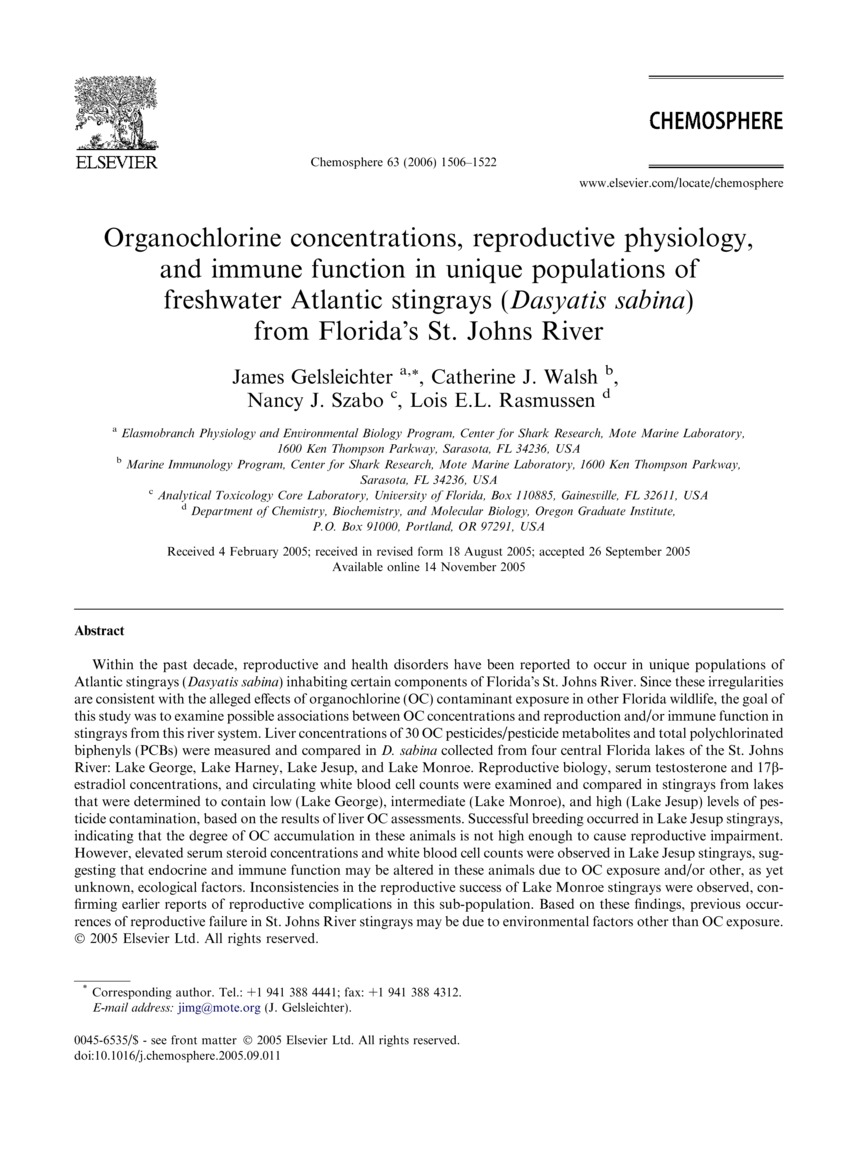Journal Article
AccessOrganochlorine Concentrations, Reproductive Physiology, and Immune Function in Unique Populations of Freshwater Atlantic Stingrays (Dasyatis sabina) from Florida's St. Johns River
Within the past decade, reproductive and health disorders have been reported to occur in unique populations of Atlantic stingrays (Dasyatis sabina) inhabiting certain components of Florida’s St. Johns River. Since these irregularities are consistent with the alleged effects of organochlorine (OC) contaminant exposure in other Florida wildlife, the goal of this study was to examine possible associations between OC concentrations and reproduction and/or immune function in stingrays from this river system. Liver concentrations of 30 OC pesticides/pesticide metabolites and total polychlorinated biphenyls (PCBs) were measured and compared in D. sabina collected from four central Florida lakes of the St. Johns River: Lake George, Lake Harney, Lake Jesup, and Lake Monroe. Reproductive biology, serum testosterone and 17β-estradiol concentrations, and circulating white blood cell counts were examined and compared in stingrays from lakes that were determined to contain low (Lake George), intermediate (Lake Monroe), and high (Lake Jesup) levels of pesticide contamination, based on the results of liver OC assessments. Successful breeding occurred in Lake Jesup stingrays, indicating that the degree of OC accumulation in these animals is not high enough to cause reproductive impairment. However, elevated serum steroid concentrations and white blood cell counts were observed in Lake Jesup stingrays, suggesting that endocrine and immune function may be altered in these animals due to OC exposure and/or other, as yet unknown, ecological factors. Inconsistencies in the reproductive success of Lake Monroe stingrays were observed, confirming earlier reports of reproductive complications in this sub-population. Based on these findings, previous occurrences of reproductive failure in St. Johns River stingrays may be due to environmental factors other than OC exposure.
Publisher - Elsevier
Subjects - Fish, Atlantic Stingray, Dasyatis sabina; St. Johns River; Endocrine Disruptor
Citation: Gelsleichter J, Walsh CJ, Szabo NJ, Rasmussen LEL. 2006. Organochlorine Concentrations, Reproductive Physiology, and Immune Function in Unique Populations of Freshwater Atlantic Stingrays (Dasyatis sabina) from Florida's St. Johns River. Chemosphere; 63(9):1506-1522 http://dx.doi.org/10.1016/j.chemosphere.2005.09.011
